BlitzWolf 51W 4-port car charger C2
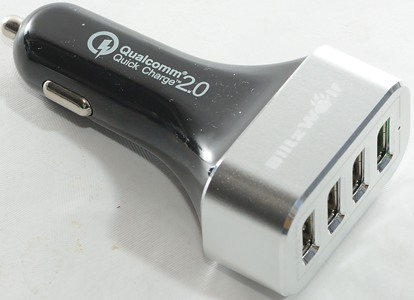
Official specifications:
- Model:BW-C1
- Input: DC 12-18V Max.
- Output: DC 3x2.4A/5V
- Output QC: 5V/2A, 9V/2A, 12V/1.5A Max.
- Power: 51 watt
- Size: 47mm * 87mm * 26mm (1-8 x 3.4 x 1 in)
I got it from Banggood (Amazon)
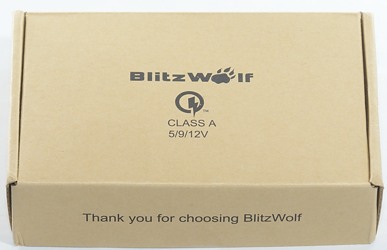
I got this charger in a fairly plain cardboard box.
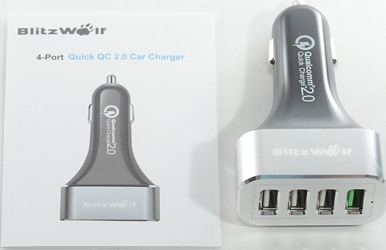
The box contained the charger and an instruction sheet.
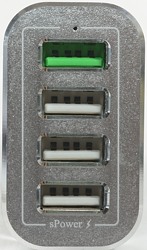
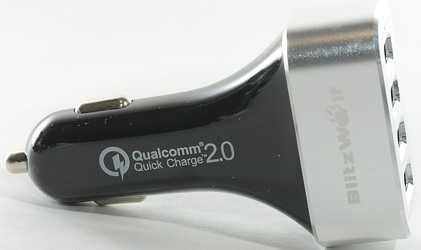
The small hole above the green usb connectors has a blue led behind it. The front part of the charger is aluminium.
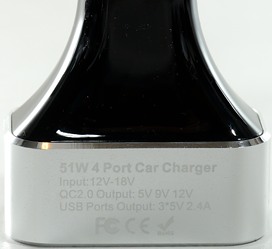
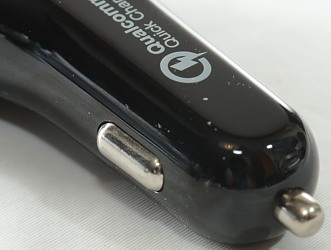
Measurements
- Power consumption when idle is 0.2 watt at 12V and 0.4 watt at 24V
- All normal usb outputs are in parallel.
- No individual port overload protection.
- Usb port coding is automatic selected (Up to Apple 2.5A).
- QuickCharge port is coded as DCP, and will switch when voltage when connected device sends a QC request.
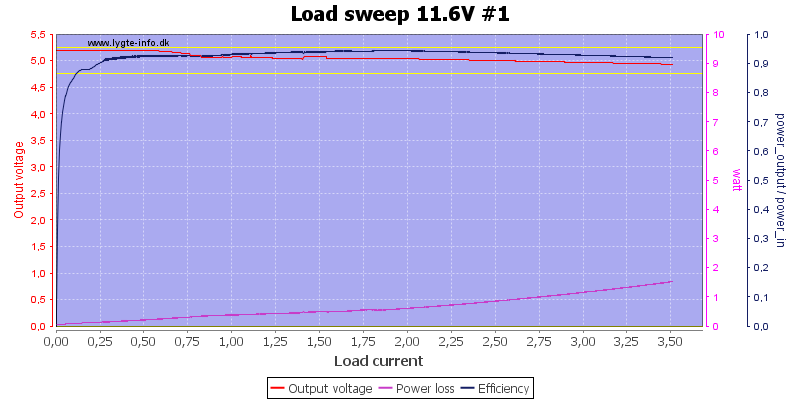

The usb outputs works fine at both high and low battery voltage, but there is no individual overload protection.
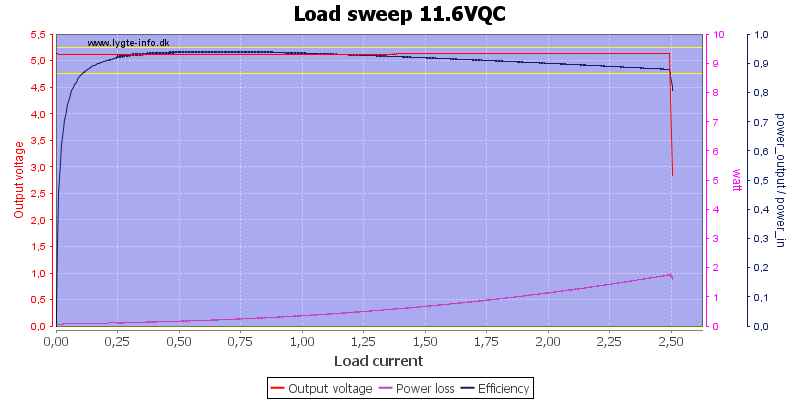
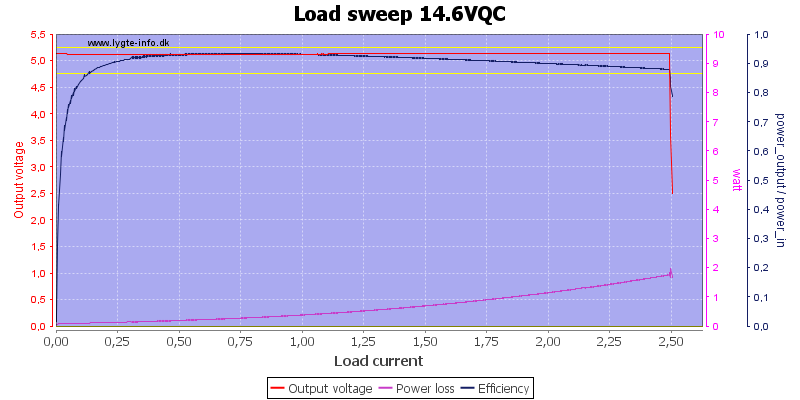
QuickCharge is different, here is an overload protection at 2.5A.
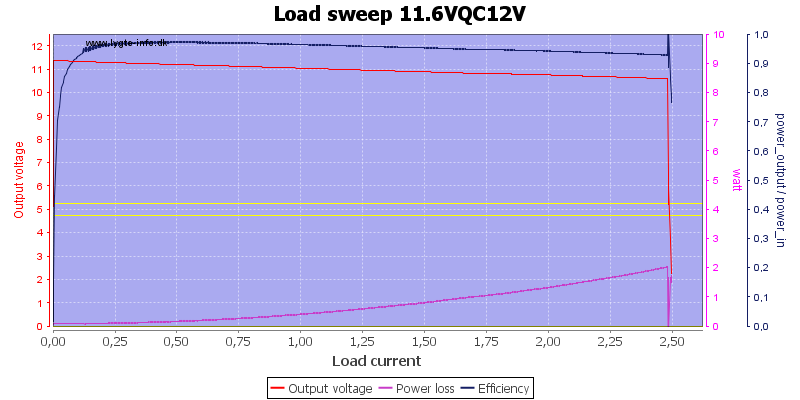

With 12V QuickCharge the current limit is still 2.5A (The rating is only 1.5A). I was a bit slow to select 12V on the 14.6V trace.
I could not select 9V, probably my trigger is not precise enough in selection settings.
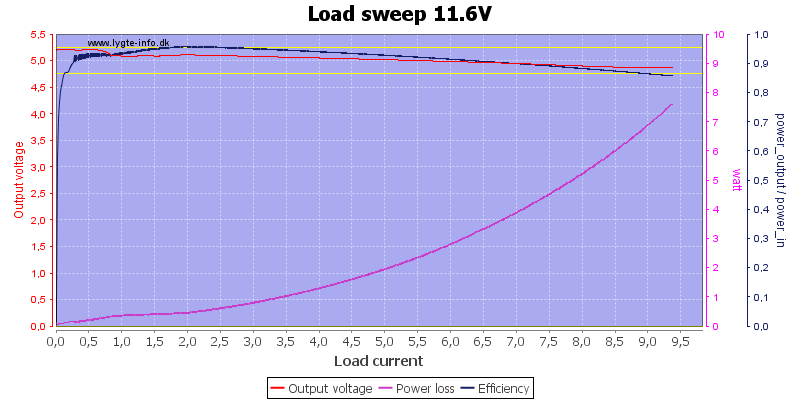
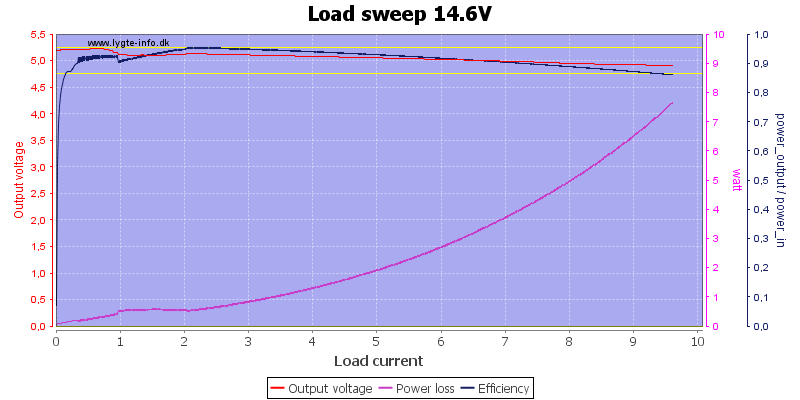
Using all 3 usb outputs at the same time I could get above 9A before it shuts down. It is not a permanent turn off, but will try to turn on at intervals.
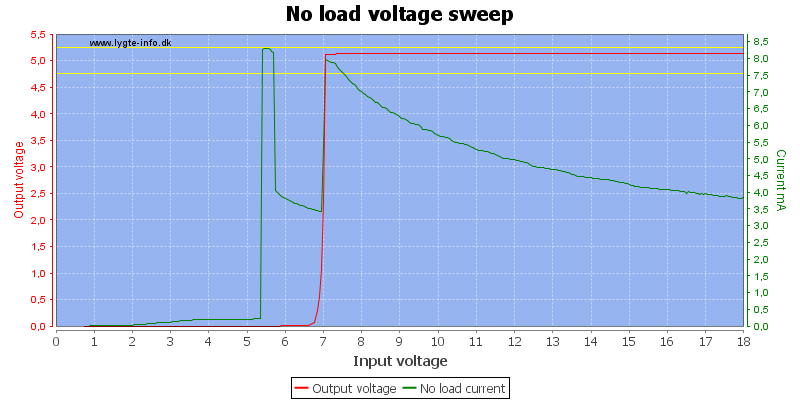
The charger needs a few mA for idle current.
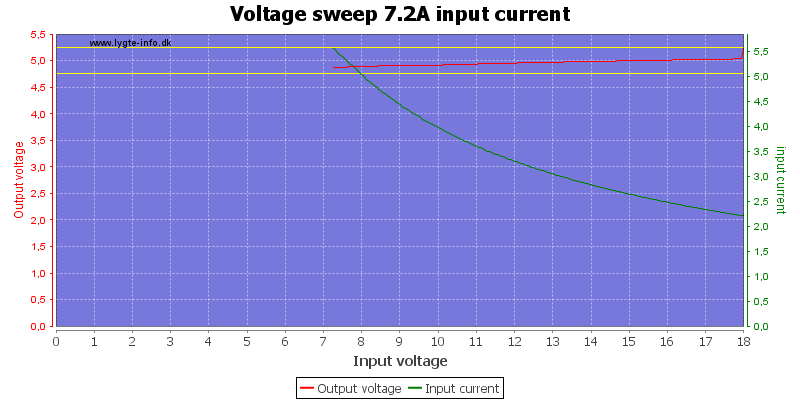
At full usb load the charger uses a bit above 3A from 12V and turns off around 7 volt.

The output voltage is fairly stable with changing input voltage.
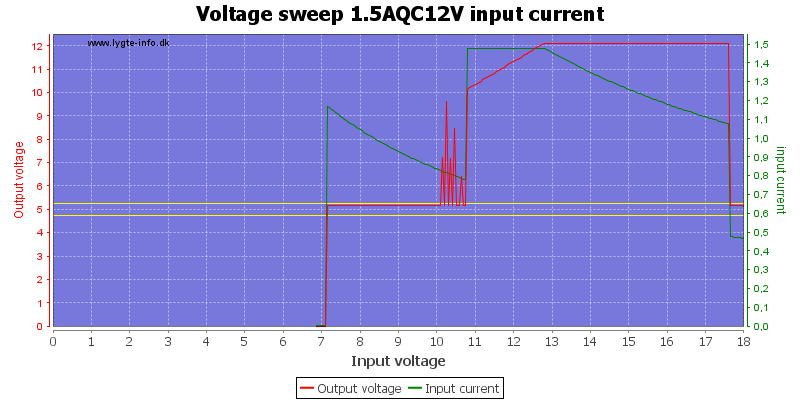
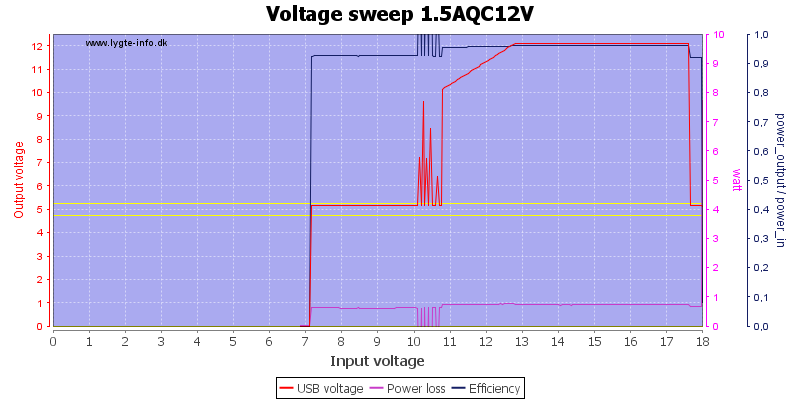
12V QuickCharge works down to about 11 volt, then the output drops out of QuickCharge mode. The jumping voltage is because I try to reengage QuickCharge.
As can be seen the QuickCharge voltage will not stay at 12V when the input voltage is low, this is as expected.
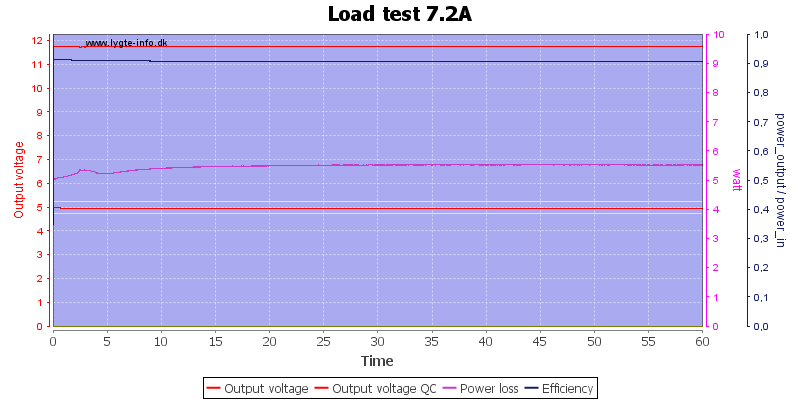
Running a load test with all usb ports at full load and QuickCharge at 12V/1.5A for one hour is no problem.
The temperature photos below are taken between 30 minutes and 60 minutes into the one hour test.
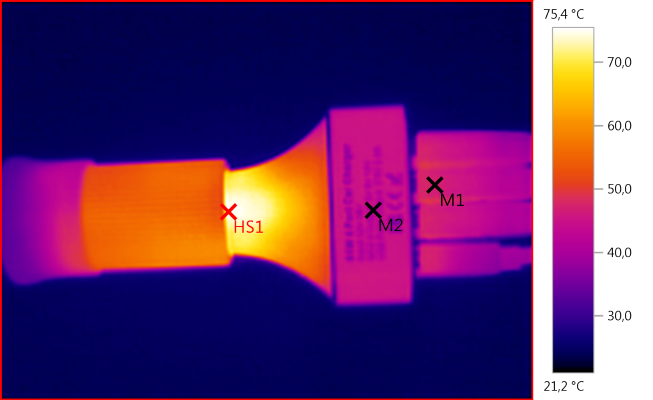
M1: 47,4°C, M2: 43,3°C, HS1: 75,4°C
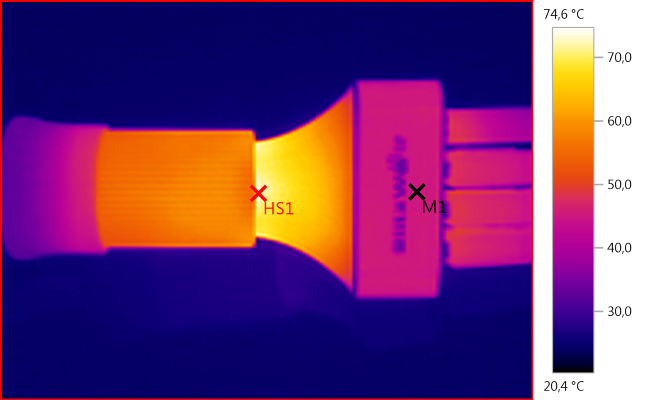
M1: 45,0°C, HS1: 74,6°C
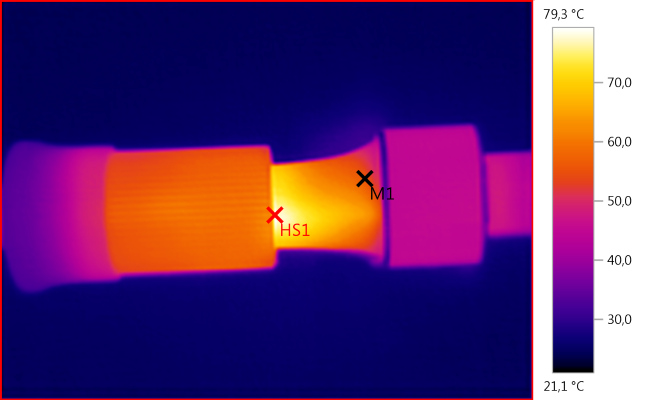
M1: 55,5°C, HS1: 79,3°C
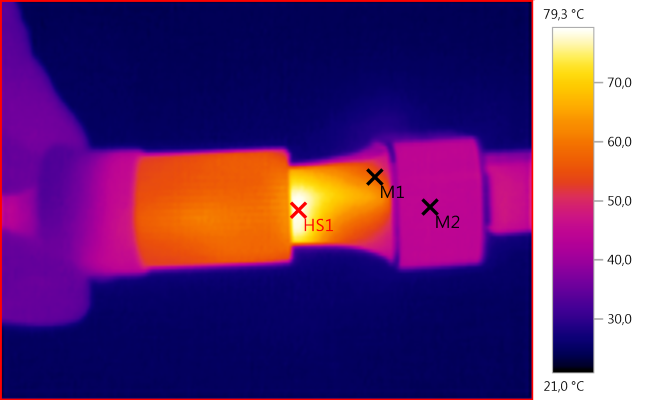
M1: 56,8°C, M2: 44,4°C, HS1: 79,3°C

The noise is very low with 31mV rms and 131mVpp

A bit more load decreases the noise 16mV rms and 74mVpp
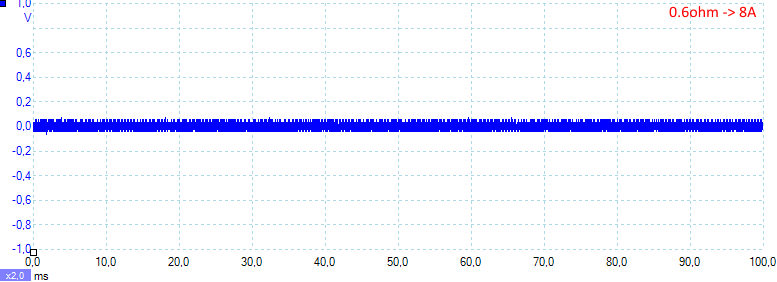
Running all outputs at full load do not give much noise: 29mV rms and 131mVpp

Quick charge also has very low noise at 5 volt: 10mV rms and 61mVpp
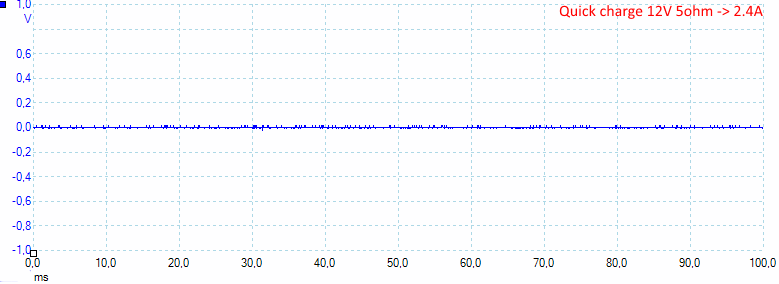
And at 12 volt: 4mV rms and 51mVpp
Tear down
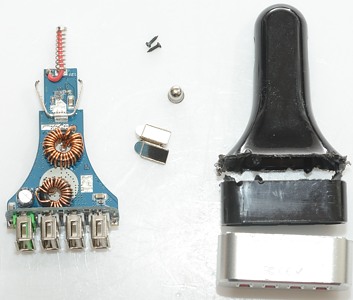
I tried to break this open, this did not work and I cut it open instead. When open I could see that the correct way to open it is to pull the aluminium head off, remove two screws and pull the electronic out.
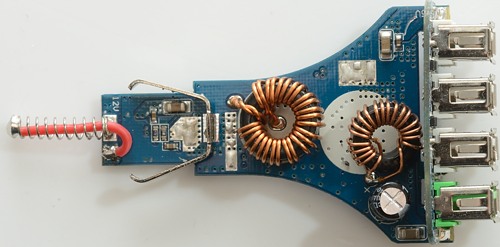
Containing both a quick charge port and normal usb ports is must contain two voltage converts (Each QC port need their own converter). On this side of the circuit board there are two inductors for the converters.
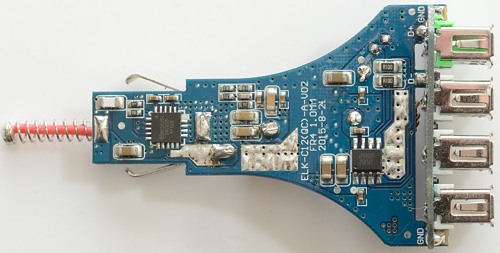
On this side the two converter chips are placed: The large GSTek GS92A5 for normal usb and uP9602P/PGM58Y to handle the quick charge.
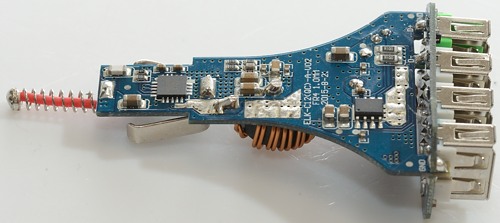
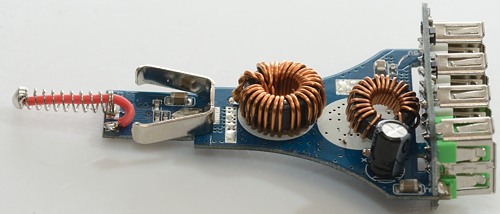
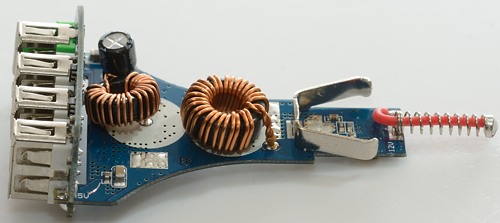
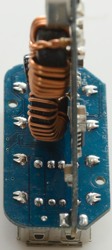
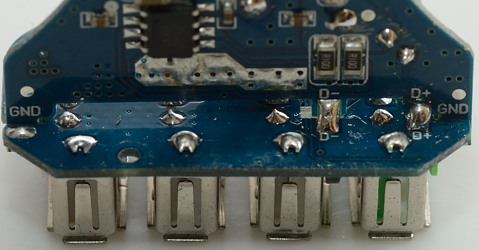
Connection from one circuit board to the other is made directly between the circuit boards.
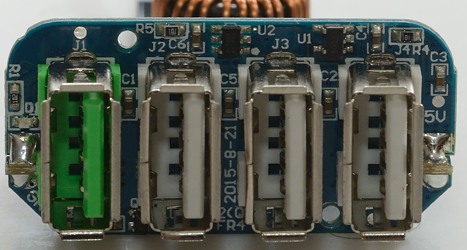
U1 and U2 is handling the automatic coding for the 3 usb ports.
Beeing a 12V device there is no need to test with high voltages.
Conclusion
This is a car charger with four high power usb ports that will charger just about any usb device as fast as possible. With one port supporting QuickCharge it can charge some pads and phones extra fast. The only negative detail is that all ports are in parallel without any individual protection.
I will call it a good charger (If each output had been limited to about 3A I would have called it very good).
Notes
The usb power supply was supplied by Banggood for a review.
Index of all tested USB power supplies/chargers
Read more about how I test USB power supplies/charger






































